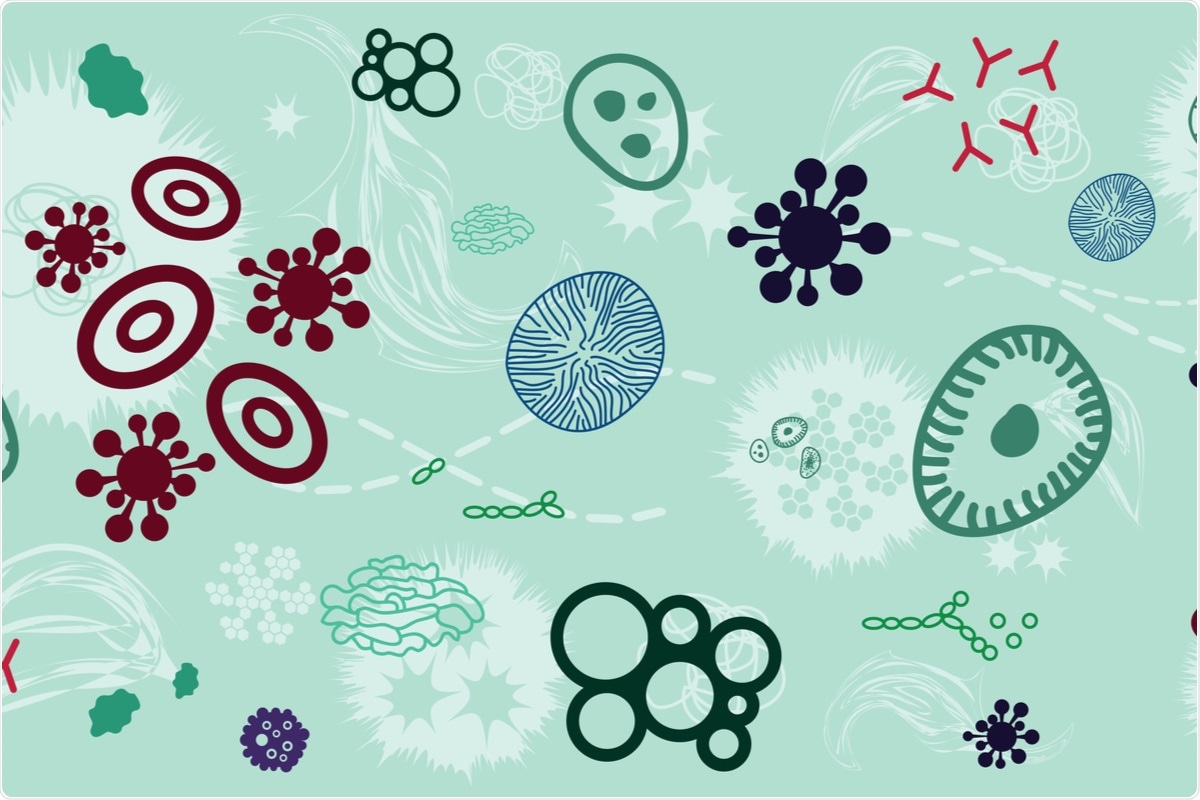The diagnosis of the coronavirus disease 2019 (COVID-19) is normally achieved by either reverse-transcriptase polymerase chain reaction (RT-PCR) assay or lateral flow device testing. Many countries provide lateral flow devices to their citizens for free or subsidize the cost.
Moreover, testing is required by several governments in order to travel internationally. However, this data only provides information on infection with severe acute respiratory syndrome coronavirus 2 (SARS-CoV-2).
Researchers from Universidad de São Francisco have been exploring data from COVID-19 patients tested at hospitals or clinics that also look for evidence of other diseases. The presence of these diseases could make a great deal of difference in some prognoses. Their work is published in the journal Diagnostic Microbiology and Infectious Disease.
 Study: Frequency of respiratory pathogens other than SARS-CoV-2 detected during COVID-19 testing. Image Credit: magic pictures / Shutterstock.com
Study: Frequency of respiratory pathogens other than SARS-CoV-2 detected during COVID-19 testing. Image Credit: magic pictures / Shutterstock.com
About the study
The researchers obtained data from a shared COVID-19 database created by the Sao Paulo Research Foundation, which allows information to be shared across five health services in Sao Paulo. They grouped individuals according to sex and age range.
SARS-CoV-2 infection was confirmed using RT-PCR, while several other infections were also screened at the same time including Influenza A viruses (-H1N1 and other subtypes), Influenza B virus, Human Respiratory Syncytial Virus (HRSV), Human Parainfluenza Viruses Type I (HPIV-1), II (HPIV-2), III (HPIV-3), IV (HPIV-4), Rhinovirus/Enterovirus (RV/EV), Adenoviruses (ADVs), Human Metapneumovirus (hMPV), Human Coronavirus (HCoV)-229E, HCoV-HKU1, HCoV-NL63, and HCoV-OC43.
The researchers also screened for four bacterial species and attempted to detect yeasts in urine. Using the Pearson Chi-square test or Fisher Exact Test, the researchers assessed differences in the proportions of respiratory infections between different groups, while associations between variables were analyzed using odds ratio.
In total, the researchers gathered the data of 73,897 individuals, about 17,000 of whom tested positive for SARS-CoV-2. Furthermore, 8.44% of people were screened for at least one other microorganism.
The individuals were between 25 and 61 years old, and roughly equally split between male and female. There were 850 tests performed for Influenza A virus, 728 for Influenza B virus, 780 for Influenza A-H1N1 virus, 778 for M. pneumoniae, 775 for HSRV, 3,768 for C. pneumoniae, 767 for RV/EV, 766 for ADVs, B. pertussis, HCoV-229E, HCoV-HKU1, HCoV-NL63, HCoV-OC43, HPIV-1, -2, -3, -4 and hMPV, 304 for yeasts in urine, and 935 for S. pyogenes.
The most commonly detected viral group, which was seen in 594 individuals, was RV/EV. Influenza B was seen in 199 individuals, whereas Influenza A-H1N1 and other Influenza A subtypes were detected in 115 and 105 individuals, respectively.
For bacteria, the most commonly identified species was S. pyogenes, which was seen in 121 individuals, 8 of whom were also positive for COVID-19. C. pneumoniae was seen in 20 individuals, all of whom were negative for COVID-19.
M. pneumoniae was seen in 10 individuals, two of whom were positive for COVID-19. B. pertussis was positive in four individuals, one of which had COVID-19. Only 17 individuals exhibited the presence of yeast in their urine; however, this was associated with testing positive for COVID-19.
Generally, most of the individuals who tested negative for COVID-19 were positive for a different microorganism, the vast majority of which were between the ages of 25 and 60. However, this was also the widest age group by far.
A total of 150 cases of detection for another microorganism, alongside COVID-19, were connected. One of these tested positive for a total of 16 microorganisms, although the researchers advise caution around this discovery and suggest it may be a database error.
These cases are too widely varying to discuss individually; however, most individuals who tested positive for an alternate respiratory virus tested negative for SARS-CoV-2, and nine viruses were associated with a lower risk of contracting the disease. Scientists have suggested that this may be due to immune activation or competition between viruses for cell receptors.
Over 1,300 COVID-19 cases, alongside another virus, were detected, with RV/EV being the most common. The researchers show that yeast in the urine is associated with testing positive for COVID-19, which could be due to immune dysfunction caused by the disease that allows fungal infections to more easily develop.
Conclusion
The researchers highlight that their results are currently exploratory; however, this information could prove extremely useful upon further investigation. It could be invaluable for healthcare providers to know which other respiratory viruses and bacterial infections are likely to be dangerous to COVID-19 patients and could therefore assist in optimizing treatment for these patients.
Journal reference:
- Boschiero, M. N., Duarte, A., Palamim, C. V. C., et al. (2021). Frequency of respiratory pathogens other than SARS-CoV-2 detected during COVID-19 testing. Diagnostic Microbiology and Infectious Disease 102(2). doi:10.1016/j.diagmicrobio.2021.115576.